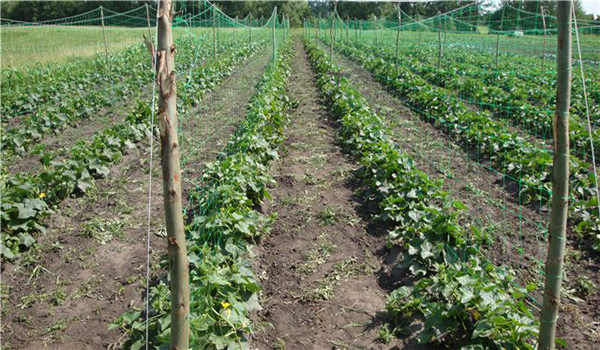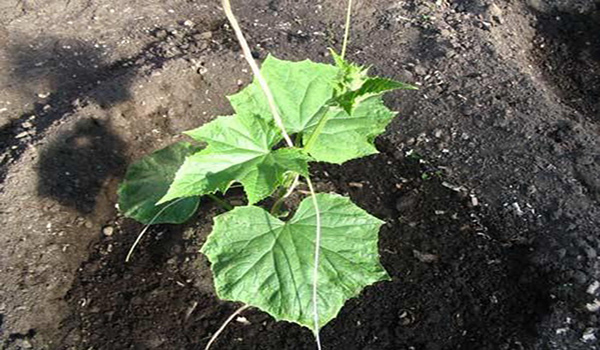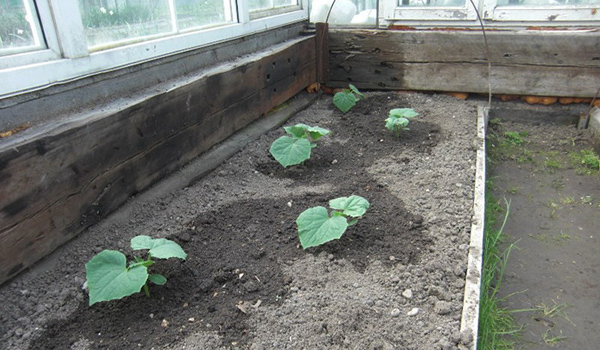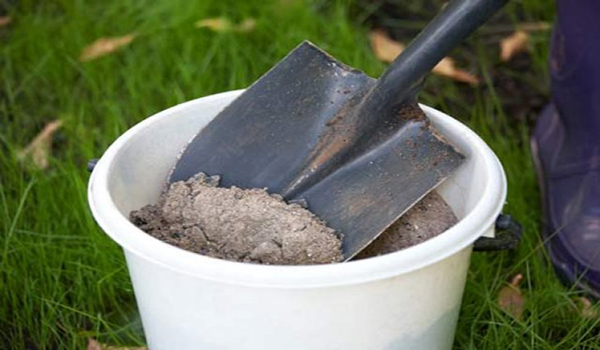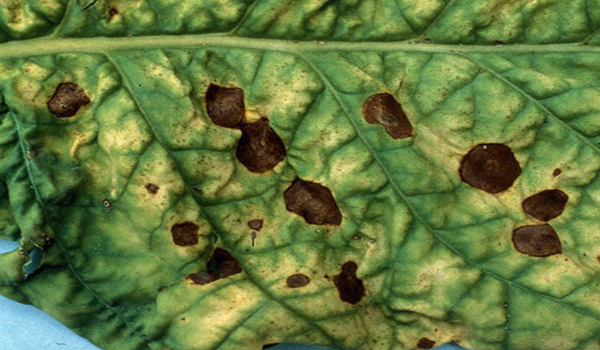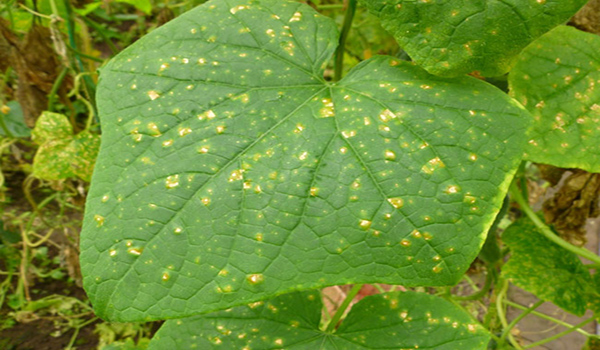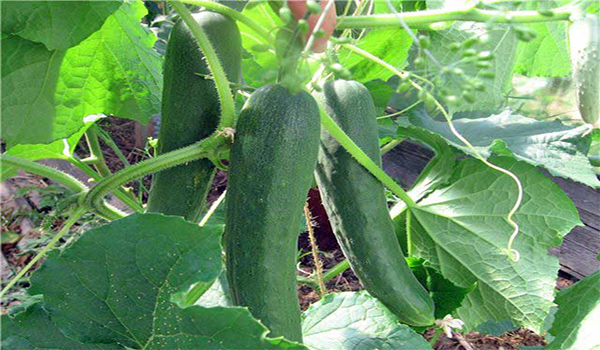Secrets of growing cucumbers in the open field
How does the real summer begin? That's right, with the smell of the first fresh cucumbers! Growing cucumbers outdoors is the most common way to cultivate this vegetable. And the farther north, the more it is grown indoors: in greenhouses and hotbeds, using photoculture. There will always be a place for him on the table. It is not only tasty, but also healthy. Cucumber has become a favorite of girls, due to its minimal calorie content, which allows it to be consumed even with the most strict diet.
On the other hand, it is acclaimed by beauticians, providing skin cleansing, hydration, whitening, and vitamin saturation. Medicine has found its advantages in cucumber: improved assimilation of protein foods along with cucumber, help in solving problems with the cardiovascular system, a positive effect on the gastrointestinal tract, resolving issues with constipation and edema, eliminating excess cholesterol.
Cucumber is not only delicious, but also a very healthy vegetable, especially if it is harvested from your own garden. How to grow it correctly in your garden? Which cucumbers are better to choose: ground pollinated or parthenocarpic?
Content
General rules for growing outdoors
Cucumber is a demanding vegetable. In order for the harvest to please you, it is important to invest in the planting time and observe some conditions for growing this product in the open field. In addition, the quantity and quality of the harvest when growing cucumbers in the open field depends on how it will grow: spread along the ground, giving a smaller yield, or trudging along the trellis, when the number of fruits increases significantly.
This vegetable is quite thermophilic, therefore, growing cucumbers in the open field provides for the location of the garden on the sunny side. ... The cucumber does not like the wind, so the planting must be protected from it. For cucumbers in the garden, choose a sunny place. A lot of sun and full daylight hours are very important for their growth, so much so that in the northern regions it is a short day that does not allow cucumbers to grow, there cucumbers are grown only in greenhouses using photoculture, that is, artificial lighting. For a cucumber, moisture means a lot. With insufficient watering, this vegetable can begin to grow. The soil should be fertilized, not only before planting a cucumber on it, but also in the fall, after all the weeds have been removed and the soil has been loosened. As a fertilizer, you can use natural "garbage" - these are fallen leaves, and plant stems, and needles.
Agrotechnics
The main care for cucumbers consists in watering, feeding, hilling and garter cucumbers in the open field. For best yield, no more than 20 cucumbers should be left on the bushes. It is necessary to attract insects that pollinate flowers, and for this there is one secret - the plants must be sprayed during flowering with a solution of sugar with boric acid and hot water in a dosage of 100g: 2g: 1 liter. ... If there are few pollinating insects, then you should think about parthenocarpic varieties, for example "Courage". He does not necessarily need indoor ground and photoculture or special care. In addition, it is very important to place plants in an open area, protected from wind and drafts, and the predecessors that grew in this place last season. So, the best predecessors for cucumbers are:
- cabbage;
- roots;
- legumes;
- onion;
- tomatoes;
- pepper.
At the same time, the cucumber itself is a favorable predecessor for most crops.
Landing
Planting cucumbers in open ground can be done in two ways: by seeds and planting seedlings.
In order to grow seedlings for cucumbers, you need to prepare seeds. To do this, they are treated with a solution of potassium permanganate for disinfection, then soak them for about 6 hours in a solution of wood ash, then rinse, wrap with a damp cloth and "warm" on a warm, sunny windowsill.
It is important that the seeds swell, hatch, but not germinate! On the prepared soil, make shallow grooves, water, sow seeds at a distance of 5 centimeters from each other, cover with loose earth. Parthenocarpic "Courage" 50 days after the emergence of seedlings in the garden gives a full harvest.
On the 6th day, at a temperature of 120 to 150, the seeds germinate. At the end of May, seedlings are planted in open ground. Cucumber seedlings for open ground are ready in about a month, that is, when there are 4 full leaves. Before planting seedlings on the beds, it must be "hardened" by taking it out into an open space in a dark place for several hours. A cucumber is planted in open ground according to the scheme: at least 1 meter between the beds and at least 20 cm between the bushes.
When growing cucumbers "Courage", the planting density should be no more than 2 plants per 1 sq. m. The early ripening parthenocarpic hybrid "Courage" is grown in the open field and indoors using photoculture. You can sow it right in the garden when the soil temperature rises to +15 degrees, then it is better to cover it with a film. Or you can sow "Courage" cucumbers in greenhouses and get 3 harvests per year with minimal maintenance. Dutch hybrids (for example, "Ecole", "Temp", "Herman"), as well as "Courage", are distinguished by bouquet flowering - up to 10 ovaries are formed in one bunch. They bear fruit for a long time, are good for salads and preservation.
After planting seedlings in open ground, it is necessary to install posts around the garden bed, between which to pull the fishing line. A string is tied to a cucumber bush, the other end of which is tied to a fishing line so that the plant has where to curl. Tying cucumbers in the open field will significantly increase yields, because it will provide maximum access to sunlight, facilitate harvesting and care measures, up to the timely detection of the disease. "Courage" and some Dutch hybrids bear fruit no worse than on trellises when the whip spreads freely along the ground. The formation of the lash involves pinching the main lash over 6 - 7 leaves, this is especially true for late-ripening varieties.
Watering and feeding
Watering is a very important activity in the care of cucumbers, especially during the formation of the fruit. The cucumber is very fond of water, so when growing cucumbers in the open field, you should take care of watering. It should be borne in mind that an overabundance is no better than a lack, everything should be in moderation. A sign that the time has come to provide the bush with water should be a partial drying out of the soil. Experienced gardeners say that it is better to water the cucumber in the early morning or evening when the sun goes down. Better to water it daily.
The temperature regime of the water should be in the range from + 18C to + 19C. It is important to remember that if the cucumber does not receive enough moisture or the water temperature "jumps", then the harvest will be bitter. Watering is especially important for the cucumber during the formation of the fruit. Parthenocarpic cucumbers (such hybrids as "Ajax", "Angel", "Blanca", "Petrel", "German" and others) never acquire this unpleasant bitterness of the fruit.
A clear lack or excess of moisture can be determined by the leaves of the plant: dark and fragile leaves indicate a deficiency, pale green ones indicate an excess.
Top dressing. The cucumber needs feeding. For the first time, it is carried out when the plant has 1-2 full-fledged leaves. The second is produced two weeks after the first, while the amount of fertilizer is doubled.Top dressing is done in the ground, avoiding fertilizer getting on the green parts of the plant itself.
As fertilizers for feeding cucumbers in the open field, a mullein solution with the addition of ash or a solution of chicken manure with ash is used. It is done like this:
- the container in which the fertilizer will be made is filled with cow dung by a third;
- add water to the top;
- mix;
- leave for one to two weeks (depending on the weather) for fermentation;
- before feeding the plants, the mullein is diluted with water in a 1: 2 ratio, and chicken droppings in a 1: 3 ratio.
Another fertilizer for cucumbers is from a mixture:
- water - 10 liters;
- ammonium nitrate -10g;
- potassium salt - 10g;
- superphosphate - 10g.
If the planted cucumbers have received less nutrition, then the plants will drop all ovaries, and the leaves will turn yellow. As for the fruits, they also deform with a lack of fertilizers.
The main defects of cucumber fruits and the reason for their occurrence:
- the fruit has acquired a pear-like shape - a sign of a lack of potassium in the soil;
- one tip of the cucumber has become narrowed, lightened and bent - lack of nitrogen;
- if the fetus has acquired a "waist" - evidence of a difference in ground temperatures or watering with cold water;
- a crop of crooked and arched fruits is a sign of irregular watering of the soil.
Disease protection
For such an easy-to-care vegetable like a cucumber, there are quite a few diseases, however, over the entire period of development of agricultural technology, methods and means of "treatment" have been developed.
The most common diseases of outdoor cucumbers.
Cladosporium. This disease is caused by a fungus.
The reason for the occurrence is sudden changes in temperature and high humidity.
Signs of the disease:
- the appearance of grayish-black spots on bushes and fruits;
- curvature and cessation of fruit growth.
Treatment: the use of drugs based on benzimidazoles in the form of spraying.
Powdery mildew. This disease is most common when growing cucumbers in the open field. Belongs to the category of fungal.
The cause is weed.
Signs of the disease:
- the formation of white bloom on the leaves;
- spread of plaque to the entire plant;
- dying off of the plant.
Treatment:
- weed removal;
- treatment with sulfur-containing preparations;
- the use of preparations containing fungicides.
Peronosporosis is another common disease in outdoor cucumbers. From this disease, the plant quickly dies, and the collected fruits are tasteless.
The cause is fungus.
Signs of the disease:
- the formation of yellow bloom or spots on the leaves;
- drying and dying off of the leaf.
Treatment:
- cleaning the site from infected plants;
- treatment with preparations containing fungicides;
- dressing with potassium permanganate of subsequent seeds.
The list of diseases of ground cucumbers is not limited to this list. However, when planted with other plants, they are able to provide mutual protection against various diseases. In addition, there are varieties of open field cucumbers that are disease resistant:
- A "nugget" that is best suited for fresh consumption;
- "Farmer" - a universal variety of cucumber, considered as salad, pickling and canning;
- "Nezhensky";
- Muromsky;
- "Stepnoy";
- "Zozulya";
- salting hybrid "Swallow F1", etc.
It should be noted the resistance of the parthenocarpic hybrid "Courage" to such common diseases as root rot, olive spot, powdery mildew and cucumber mosaic. Maybe this also explains the popularity of "Courage" in our gardens. Cucumber is not a difficult vegetable to grow, but useful for the human body. We wish you good, tasty harvests.
Video "Cucumbers in the open field"
Video with information on varieties of cucumbers suitable for outdoor cultivation.

